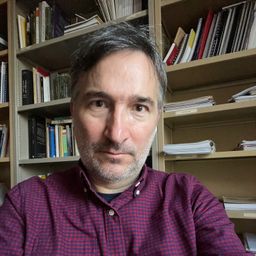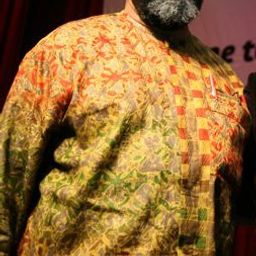
Martin Drouin is a professor in the Department of Urban and Tourism Studies at UQAM. He was initially trained in history before moving to an urban studies program for his doctoral dissertation. He then turned to the history of the present time by focusing on citizen action to safeguard Montreal's heritage in the context of numerous urban conflicts beginning in the 1970s (Le combat du patrimoine, Montréal 1973-2003, PUQ, 2005). His research focuses on the history of built heritage in Quebec. He is particularly interested in the patrimonialization and the meaning invested in heritage conservation. In this perspective, citizen action is a privileged axis of his research. He is not only interested in the preservation and requalification of old buildings but also in the modes of enhancement and mediation, notably through tourism. He is currently vice-president of the Conseil du patrimoine de Montréal, an advisory body of the City of Montreal on heritage matters.
Elementy, w których Prof. Martin Drouin uczestniczy
sobota 4 czerwiec, 2016
There is no doubt that the involvement of civil society is a key element in the history of heritage. Working upstream, in line with or against the tide of state recognition, enlightened amateurs or ordinary citizens have invested time and energy in the safeguarding and enhancement of a good, a place or a practice, judged, from their point of view, as irreplaceable or remarkable. It is easy for each country or each region to find an example of a precursor, working alone or in a group, who has ...
wtorek 23 sierpień, 2016
Le patrimoine est souvent vu comme une charge, un poids, une responsabilité morale et financière, qui peut paralyser et pousser à l’inaction. Pourtant, il peut également s’avérer un outil dynamique capable de valoriser les territoires. Le patrimoine devient alors une ressource à faire fructifier sans la détruire ou l’aliéner. Une telle conception inscrit le patrimoine à l’enseigne d’un projet requérant une planification territoriale, une stratégie des acteurs et une responsabilisation des ...
czwartek 25 maj, 2017
Recuperation, reuse, recycling, reconversion, requalification: for over half a century, these concepts have been simultaneously associated with the notion of heritage. This period has been, in effect, marked by the transition from a “heritage of contemplation” to a “heritage of use,” to borrow Jean-Claude Marsan’s expression. In fact, buildings and sites are no longer just safeguarded for historic or aesthetic considerations, but for a new usage that is supposed to give them contemporary r...
piątek 29 wrzesień, 2017
niedziela 7 listopad, 2021
Président de session | Session chair : Martin Drouin
środa 25 maj, 2022
We propose a rich and colorful inaugural evening, in a mythical place: Dawson Hall, behind St James United Church (1887-1889, Alexander Francis Dunlop, arch.), known as the "Montreal Methodist Cathedral" - with 2000 seats, it was the largest Methodist church in Canada when it was built. Designated a National Historic Site of Canada in 1996, it escaped demolition in 1980 when it was classified as a historic monument, and then escaped extinction thanks to an ambitious restoration project, in...
sobota 28 maj, 2022
Since the 19th century, citizens grouped within different types of associations, from the learned society to the friends of heritage, have been interested in local history and, by extension, in the traces of these on the territory. This citizen contribution is expressed in many ways. First of all, while such historical society groupings have a venerable past, their proliferation and their commitment to defend the archives, to s...
Nearly forty historical societies and heritage associations are active on the island of Montreal. Some are very old, but most are more recent. Some are very well known, most work in the shadows. Nevertheless, all these associations play an essential role in the community. They not only involve hundreds of volunteers but also reach thousands of citizens. Their action is multifaceted.We are currently conducting a research project in co...
We offer a unique experience for the closing dinner of this conference in Montreal, in the former U.S. pavilion of Expo'67 - the most popular of the exhibition, with 5.3 million visitors: the "geodesic dome" designed by architect Buckminster Fuller (1895-1983) with the collaboration of Shoji Sadao. The self-supporting steel honeycomb structure, covered with a polymer skin, was burned down in 1976 and redeveloped in the 1990s, according to the plans of architect Éric Gauthier, into an envir...
poniedziałek 29 sierpień, 2022
This session presents case studies and policy reviews that contribute to ongoing debate and international dialogue on the role of planning systems and conservation practices in addressing the challenges of citizen engagement—conserving local interests, place attachments alongside physical remnants of industrial heritage. Over the past half century, we have witnessed the development and changing focuses of urban planning and conservation discourses addressing industrial heritage. Relevant p...
This session presents case studies and policy reviews that contribute to ongoing debate and international dialogue on the role of planning systems and conservation practices in addressing the challenges of citizen engagement—conserving local interests, place attachments alongside physical remnants of industrial heritage. Over the past half century, we have witnessed the development and changing focuses of urban planning and conservation discourses addressing industrial heritage. Relevant p...
This session presents case studies and policy reviews that contribute to ongoing debate and international dialogue on the role of planning systems and conservation practices in addressing the challenges of citizen engagement—conserving local interests, place attachments alongside physical remnants of industrial heritage. Over the past half century, we have witnessed the development and changing focuses of urban planning and conservation discourses addressing industrial heritage. Relevant p...
Elementy, w których Prof. Martin Drouin attends
piątek 3 czerwiec, 2016
Welcome addresses and cocktail, followed by the Concordia Signature Event "The Garden of the Grey Nuns". As the opening ceremony and cocktail take place in the former Grey Nuns' Motherhouse, recycled into campus residence and reading rooms by Concordia University, delegates will also have the possibility to discover the video Three Grey Nuns (3 minutes, by Ron Rudin and Phil Lichti. Three Grey Nuns recount their memories of communal life in the Grey Nun’s Motherhouse. Built...
Working with archival documents and the current-day morphology of the Grey Nuns' site, Dr Cynthia Hammond, Dr Shauna Janssen, in collaboration with Dr Jill Didur, will curate a series of installations and performances that speak directly to the rich heritage of a specific urban landscape: the gardens of the Grey Nuns' Motherhouse, now part of the Concordia University downtown campus. Visitors will have the opportunity to explore the lost working gardens of the Grey Nuns. As with other such...
sobota 4 czerwiec, 2016
What if we changed our views on heritage? And if heritage has already changed? While, on the global scene, states maintain their leading role in the mobilization of social and territorial histories, on the local scale, regions, neighbourhoods and parishes have changed. Citizens and communities too: they latch on to heritage to express an unprecedented range of belongings that no law seems to be able to take measures to contain, often to the discontent of...
This festive event will offer delegates a taste of one of the iconic dishes of Montreal, the smoked meat sandwich, imported by Jewish immigration from Eastern Europe in the early 20th century. In particular, the tasting will allow a discovery of the products of the renowned international institution Schwartz's, the Hebrew Delicatessen for which Montrealers and tourists alike are willing to wait in long line-ups. During the tasting, “Chez Schwartz,” a documentary produced by Garry B...
Most of what we experience as heritage emerges into conscious recognition through a complex mixture of political and ideological filters, including nationalism. In these processes, through a variety of devices (museums, scholarly research, consumer reproduction, etc.), dualistic classifications articulate a powerful hierarchy of value and significance. In particular, the tangible-intangible pair, given legitimacy by such international bodies as UNESCO, reproduces a selective ordering of cul...
niedziela 5 czerwiec, 2016
"What does heritage change?" is a multifaceted question to which the answer(s) are in primary respects related to real-life negotiations among different groups of citizens, cultures, races, ethnic groups, sexual identities, and social classes about received, official and/or widely accepted or accomodated intangible attributes, cultural traditions, historic monuments, buildings, and other transmitted or revived historical legacies. Heritage designated by and for whom, for what motivations, an...
poniedziałek 6 czerwiec, 2016
Le patrimoine fait aujourd’hui l’objet d’attentions autant que d’agressions et de destructions. Cela peut s’expliquer par les difficultés de son identification ou de sa conservation. Cela peut plus profondément s’expliquer parce que, dès le départ, il célébre un événement ou conserve une mémoire qui peut être ou devenir une source de dissenssions et de conflits politiques. Enfin, sa reconnaissance suscite des gains économiques pour les uns mais des pertes pour les autres. Mais peut-être...
To celebrate our film series dedicated to heritage, sponsored by the Department of American Studies at the University of Maryland and the United States Chapter of the Association of Critical Heritage Studies, this event will spotlight the iconic Sugar Shack, which is rooted from Quebec to New-England and which is both the place of maple syrup production and of friendly gatherings during the maple syrup season. In a festive atmosphere, delegates will be invited to taste one of the essential of...
wtorek 7 czerwiec, 2016
(en français) Le centre-ville a été au cœur de nombreuses luttes depuis les années 1970. Le parcours proposé par Martin Drouin, historien, professeur au département d’études urbaines et touristiques de l’Université du Québec à Montréal, présentera quelques combats qui ont marqué la scène patrimoniale et transformé le paysage urbain montréalais. _ Downtown Montreal has been at the centre of numerous struggles since the 1970’s. The itinerary proposed by Martin Drouin, historia...
The closing dinner of the conference, called “Pawâ” according to a French-Canadian tradition borrowed from the Native American lexicon, will be an opportunity to discover, in the heart of the Old Port of Montreal, an original culinary creation by the caterer Agnus Dei, from the renowned Maison Cartier-Besson in Montreal, leader in its field for its boundless creativity and event expertise. The dinner, in the form of stations, will offer delegates an exploration of Quebecois culinary heritage,...
środa 8 czerwiec, 2016
||| This loop crosses the forest to the top of Mount Royal allowing a discovery of its fauna and flora. Beautiful views offer a unique perspective of the city and its history, including that of the Chalet which offers a stunning view all the way to the river. The tour includes a stop at the Smith House, headquarters of Les amis de la montagne. The house holds, among others, the permanent exhibition "Mount Royal, A Territory" which offers a comprehensive overview of Mount Royal: its history...
piątek 26 maj, 2017
The banquet includes a welcome drink, three-course dinner with three wine pairings, explained by a winemaker, as well as transportation to and from Ravine Estate Winery. Le banquet inclut un cocktail, un repas trois services avec trois mets-vins, expliqués par un vinificateur, ainsi qu'une navette aller-retour à Ravine Estate Winery. Cocktail : 18:20 Banquet : 19:00
czwartek 1 wrzesień, 2022
piątek 2 wrzesień, 2022
Come and share the good times of the congress and celebrate your scientific and professional discoveries in a former fruit jam factory, Usine C, built in 1913 and transformed at the end of the 1970s into a place for creation and dissemination.Discover Montreal's gastronomy thanks to an exceptional caterer. Learn about Montreal's musical heritage and the history of the industrial district that brought it to life. Then hear and experience Quebec's musical tradition as you are carried ...












